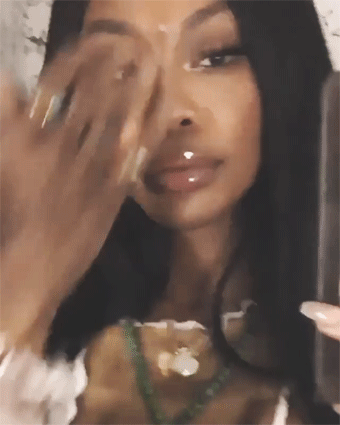Text
🌌 Witchcraft PSA: The Chakras & Cultural Appropriation ❌
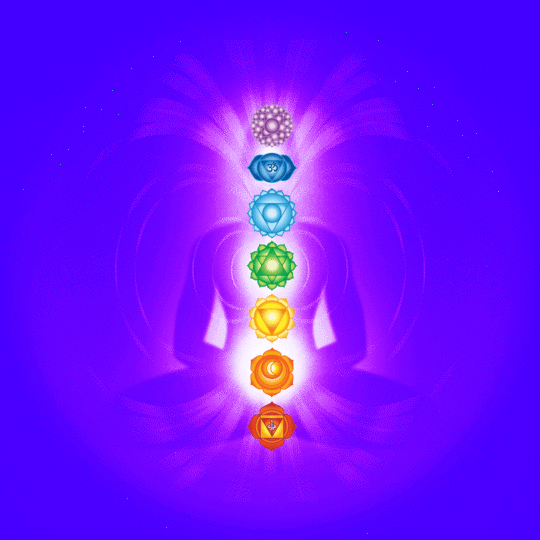
Warning: This is probably the longest post I've written so far, so be prepared for a VERY long read.
Disclaimer: I do not claim to be an expert, a historian, or a theologist. I am simply a witch, a student, and a POC living in the United States where many aspects of pagan spirituality are often appropriated from other cultures and perpetuated through simple ignorance. I'm sure this post will generate some type of controversy, but I do not mean to attack anyone or their beliefs with this post.
So. Here's the big one, guys. The post I've been dreading making but have really wanted to write for a while.
Cultural appropriation is one of the hottest topics in the modern witchcraft community, and the discourse about it on tumblr is far-reaching and incendiary at best. The problem: Where should witches draw a line between explorational spirituality and cultural appropriation?
I'm not here to lay down laws of morality. I'm not the cultural police. But I DID have a very eye-opening experience recently that led me to create this post.
I'm a white-passing minority, and I won't pretend that this doesn't lend me a degree of privilege in America. Especially as a witch, many doors are open to me. Just within the witchcraft community, I look white enough to be welcomed whole-heartedly into most neopagan circles. That's not to say that blatant racism is abundant within the pagan community, but we can't deny that many non-white cultural practices are heavily stigmatized. For instance, as SOON as any of my "light worker" friends hears that I have a family background in Santeria and Brujeria, the FIRST thing I hear is, "Oh, I don't mess with that dark stuff," or "Well, I don't like the idea of hurting animals and other people." And don't get me started on the ignorant conversations one of my dark-skinned, Vodou-practicing friends has had to sit through before.
Like, what?
Because of this, I'm often the first person within my social circles to stand up for cultural barriers and denounce cultural stigma. Above all else, I try to respect the hell out of closed cultures and educate myself about cultural appropriation.
So, it was much to my dismay when I discovered that I have been culturally appropriating the chakra system for the last 11 years of my witchcraft practice.
The chakra system and its use in western occultism is one of the most heavily debated topics in the witchblr community. A simple search will yield dozens upon dozens of posts, each filled with witches claiming that usage of the chakra system either IS or IS NOT appropriation. For the most part, I've tried to stay out of this debate. I've incorporated the chakras into my practice since I began, but I thought my oriental heritage and my "thorough" understanding of the chakras made this okay. But, lo and behold, I was sorely mistaken.
So, after some deep research into this topic, and after talking to several Hindus and Buddhists, here's my attempt to shed some light on this issue.
What are the chakras (according to Western occultism)?
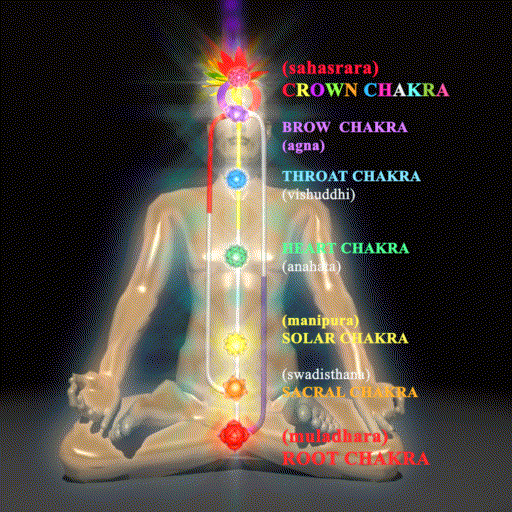
As a brief overview, the chakras are believed to be spiraling energy centers that exist within the subtle body. There are seven of them, and they lie along the spine in places where large amounts of nerves and vital organs exist. Similar to the way our brain is a large compilation of nerves, these chakras are believed to be the intersection points of energy currents within our spirit.
Each chakra rules over a particular psychological, physical, and spiritual state of being, and disruptions within the chakras are believed to lead to different types of mental, emotional, and physical illnesses.
These chakras are depicted as lotus flowers with varying numbers of petals, and each is represented by its own color. Each one also corresponds to a Sankskrit syllable mantra which is believed to activate the chakra when spoken aloud.
In order, they are:
❤ Muladhara - The Root Chakra - Connection to the Earth and the Self - Located at the base of the spine - Depicted as a red lotus with 4 petals - Mantra: LAM
🧡 Swadhisthana - The Sacral Chakra - Connection to sexuality and instinct - Located near the sexual organs - Depicted as an orange lotus with 6 petals - Mantra: VAM
💛 Manipura - The Solar Chakra - Connection to will and identity - Located in the Solar Plexus - Depicted as a yellow lotus with 10 petals - Mantra: RAM
💚 Anahata - The Heart Chakra - Connection to love and relationships - Located in the heart - Depicted as a green lotus with 12 petals - Mantra: YAM
💙 Vishuddha - The Throat Chakra - Connection to voice and communication - Located in the heart - Depicted as a blue lotus with 16 petals - Mantra: HAM
💜 Ajna - The Third Eye Chakra - Connection to spiritual awareness - Located above and between the eyes - Depicted as a purple lotus with 2 petals - Mantra: OM
🌈 Sahastrara - The Crown Chakra - Connection to Source/the Universe - Located at the top of the head - Depicted as either a purple, rainbow, or white lotus with 144,000 petals - Mantra: Silence
Along with these associations, each chakra is often associated with various crystals, herbs, and spirits.
What are the chakras within their original cultural context?
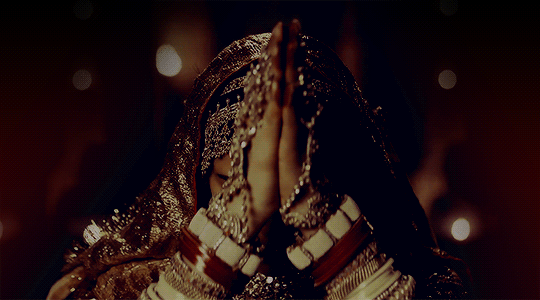
The concept of 'chakras' arose from a practice known as Tantric Yoga. This was a spiritual system that began to gain popularity in India and other eastern cultures between 600-1300 CE. Up until this point (and concurrently as well), most types of spirituality in these cultures was very transcendental - that is, they had a fundamental belief that the Divine was transcendent and inherently 'above' the natural world. Therefore, in order to commune with the divine, it was believed that the material world had to be renounced and denied, and higher states of consciousness had to be achieved in order to commune with divinity.
Tantric spirituality flipped the script. It adopted the idea that divinity was an inherent quality of the natural world, and that a person could freely commune with the divine by opening themselves up to the world around them through mindfulness and all-embracing compassion.
The philosophies and teachings of tantric yoga (loosely known as 'tantras') became extremely widespread throughout this period and dramatically shaped many emerging sects of Hinduism and Buddhism. As this philosophy spread, many different types of specific spiritual practices arose, many of which can be recognized in our Western ideas of holistic meditation - such as mantras, mudras, mandalas, and even modern Western yoga.
One such concept that gained popularity was the idea of chakras - focal points of spiritual energy in the body. However, these chakras were very different than what Westerners think of today.
There were a LOT of different traditions that arose from Tantric teachings, and each one had its own unique belief about chakras. The most obvious difference between these chakra traditions was that each one believed in a different number of chakras. Some systems had three, others had six, others had seven, others had nine, others had 10, others had 21, etc.
Each one approached the chakras a bit differently, and so each one believed in a different number of chakra centers.
What are some of the primary differences between Western Chakras and Tantric Chakras?
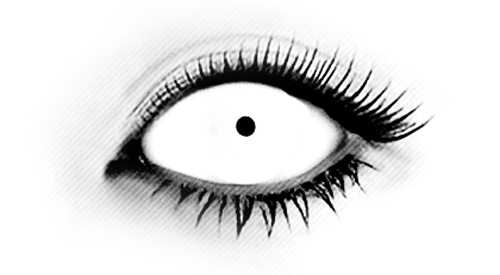
The most eye-opening difference for me was that Tantric chakras have none of the associations that Westerners believe in today. Original practitioners of Tantric spirituality did not associate specific colors with each chakra, they did not associate physical or psychological states with them, they did not associate any herbs or crystals or planets with them, and they did not even associate Sanskrit syllables with them. What's more, they didn't even believe they were located in fixed points on the body.
Loosely, they believed that the chakras - like all things spiritual - were very fluid. They could often be accessed through general areas of the body, but they definitely were not stagnant, fixed points. This also accounts for the varying number of chakras, because it was believed that the chakras would manifest in different ways depending on what traditional practice you used to approach them.
Many traditions did believe that these chakras could be depicted as lotus flowers with various petals, but these were not meant to inherently describe the individual chakra. Rather, these depictions were meant to serve as a visualization for a person to meditate on when trying to access a specific chakra.
Along with this, these traditions did not assign specific names or syllables to these chakras - at least not the ones we use today. Rather, it was believed that Sanskrit syllables carried an inherent magic or divine energy within them (similar to Kabbalistic views of the Hebrew language), and they assigned various letters and syllables to the petals of each lotus flower, which corresponded to various energies in nature.
The symbols, names, and Sanskrit syllables popularized in the West today don't even correspond to any kind of Tantric chakras. They actually correspond to the elements within certain traditions of eastern spirituality. They also are not meant to be uniquely associated with any individual chakra. Rather, these syllables were used in meditation to invoke specific elemental energies into different chakras depending on the situation.
If your tradition believed that the heart chakra could affect the relationships in your life, and your personal relationships happened to be very stagnant, you could vibrate the syllable for the Wind element and invoke that energy into your heart chakra to help your personal relationships become more dynamic. Etc.
This brings me to the final thing I'd like to talk about: Westerners are NOT using the chakras for their original purpose.
The only concrete associations that tantric traditions had for the chakras were deities. These traditions believed that each of their chakras was associated with a specific Hindu deity (though the specific order or deities listed varies between tradition and time period).
The original purpose of 'working with chakras' was to eventually invoke the energy of these specific deities into a person's chakras in order to become closer to these gods and goddesses and emulate their behavior and teachings in daily life.
How did the original concept of chakras get misconstrued in Western culture?
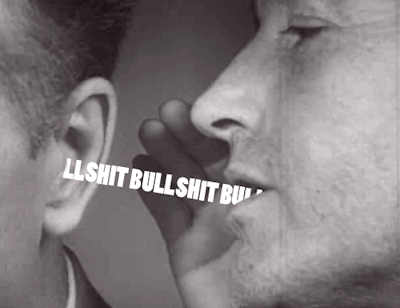
Oh, boy. This is a tough answer that's soaked in 1000 years of colonialism, racism, cultural and linguistic barriers, and simple misunderstandings.
But, simply put, the appropriation of tantric chakras can be narrowed down to four specific individuals.
In 1577, a spiritual teacher and academic named Purnananda Yati wrote a treatise of tantric teachings called the Shatchakra Nirupana, or roughly 'An Explanation of the Six Chakras'.
In this treatise, Purnananda lays out the modern framework we see today - six chakra centers within the human spirit, with an additional seventh chakra above the head that connects the spirit to the divine source. He based this concept off of an earlier writing from the 13th century, which also details this framework but openly acknowledges that this is just ONE tradition, and that many other traditions also exist.
In 1918, a British scholar named John Woodroffe translated Purnananda's treatise from Sanskrit into English, and unfortunately, there were many mistranslations in Woodroffe's version. This translation was what eventually gained extreme popularity throughout academic and occult circles in the West.
Throughout the 1930's, 40's, and 50's, the renowned European psychologist, Carl Jung (who you might recognize from your Psych 101 class), became fascinated with the idea of chakras and their relation to consciousness. Throughout this time period, Jung wrote extensively about potential connections between the seven chakra centers and various psychological states. This is where the chakras became associated with different states of being, such as instinct, will, and sexuality.
Finally, in 1987, an American occultist and spiritualist named Anodea Judith published a book entitled Wheels of Life. In this book, Judith talks extensively about the seven chakras, and even lists correspondences between the chakras and various herbs, crystals, elements, planets, tarot cards, deities, and archangels.
Her book became wildly popular within holistic and spiritual circles, and set in stone the way that modern neo-pagans view the chakras in the West.
So, are chakras part of a closed culture?

Yes and no.
Chakras as we view them in the West are, at best, a distorted and bastardized version of a beautiful, ancient belief. They were studied and theorized by many traditions for over a thousand years, and many of these traditions still exist today. Most commonly, they are still used in Shaivism, which is one of the most prevalent forms of Hinduism in the East.
Many of these living traditions ARE, in fact, closed. But more than that, to perpetuate (and worse, claim spirituality from) a distorted, white-washed version of an Eastern religious belief is just plain disrespectful and potentially racist at its worst.
That being said, though, there are certain living traditions which ARE NOT closed, such as the exceedingly popular Tibetan Buddhism. These traditions recognize many of the same teachings and are freely shared with people of any nationality or background - as long as you put in the work to learn about them.
The Main Takeaway

The chakras, as viewed in the West, are incorrect. This is not to disclaim any type of spiritual experience Westerners may have had by utilizing chakras in their practice, but I'm of the opinion that Westerners should recognize that the "chakras" they believe in don't actually have any basis in ancient spirituality.
That being said, the concept of a subtle body and energy centers within the human spirit is not unique to the Far East.
The concept of currents and centers of energy within the body can be found in cultures the world over, from India to Japan to Korea to Africa to the Middle East, and even among the Native Americans who never came into contact with these other cultures (as far as we know).
The human soul, the subtle body, and spiritual energy are concepts that supercede cultural boundaries, and if studying and utilizing them is an integral part of your craft, then I encourage you to follow your personal path and find connection with the Universe in whatever way you feel called to.
But. Perhaps developing your own unique system and beliefs about the energy centers within the body is the best course of action for us Westerners. Until we ourselves make the effort go join one of those (open) traditions, subscribing to the modern Western system of "chakras" is, in my opinion, cultural appropriation.
• • •
Brightest blessings, and best of luck 🌙
3K notes
·
View notes
Text










photo dump ig
follow me on instagram- 333lisaz
1 note
·
View note
Text

hi x
1 note
·
View note










